
Apple may have a fight on its hands in the 27-inch 5K display space. Recently we've seen a solid budget competitor to the $1,600+ Apple Studio Display arrive on the market with the $799 ASUS ProArt 5K Display, and now here we have the BenQ PD2730S, part of the company's Designer Series that promises "always accurate and consistent colors."
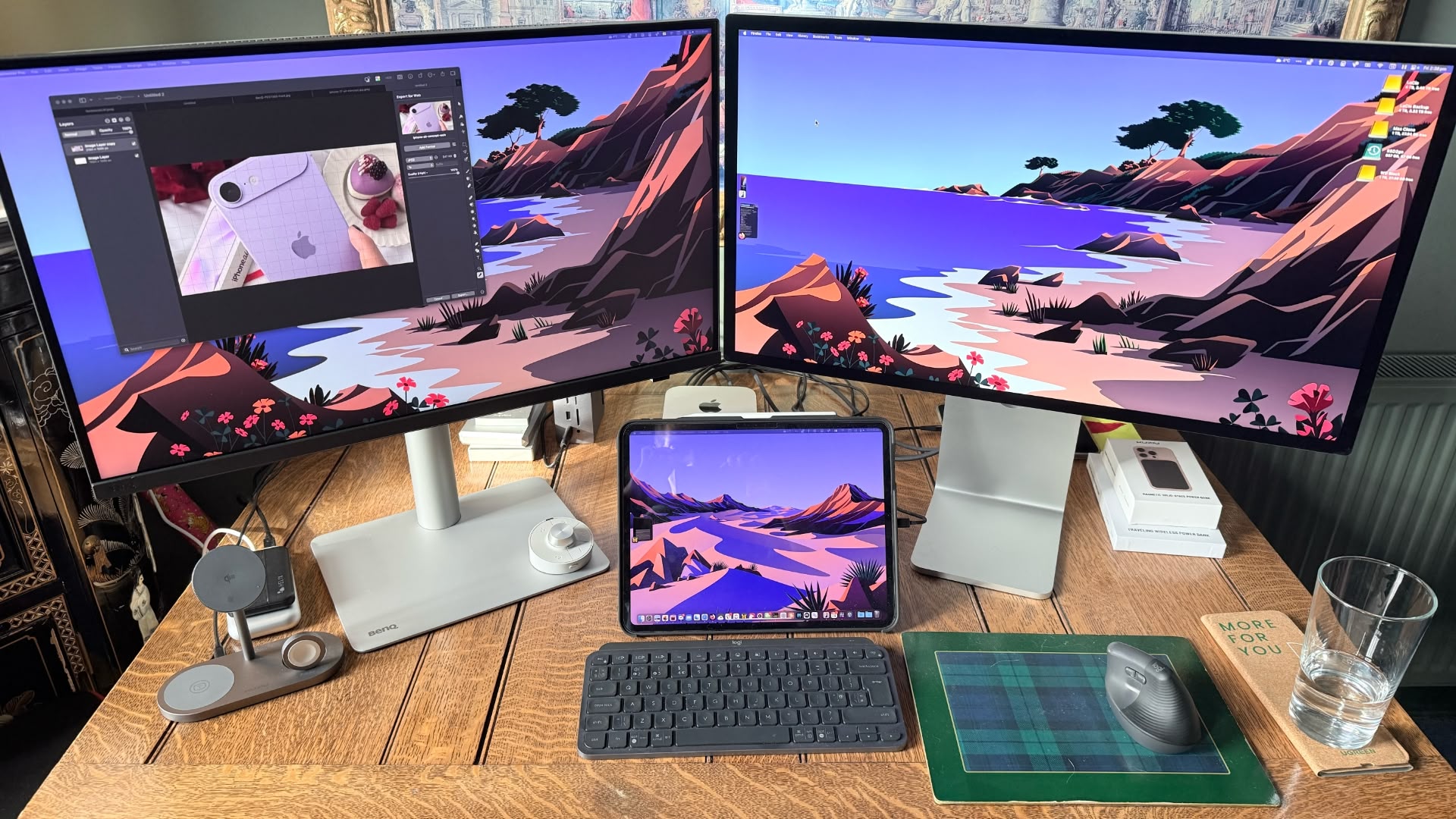
Price-wise, this monitor sits $400 either side of the Apple and ASUS offerings at $1,200. As you'd expect, it packs more features than the cheaper ASUS display. For a start, it's Thunderbolt 4. But the extra capabilities don't end there. I've spent several weeks with it, putting it through its paces alongside an Apple Studio Display. So how did it fare?
Key Display Specifications
- Panel Type: 27-inch IPS with Nano Matte coating
- Resolution: 5120 x 2880 (5K)
- Brightness: 400 nits peak
- Contrast Ratio: 2000:1 (IPS Black technology)
- Color Gamut: 98% P3, 100% sRGB
- Refresh Rate: 60Hz
- Response Time: 5ms (GtG)
- HDR Support: VESA DisplayHDR 400
- VESA Mount: 100 x 100mm
- Built-in Speakers: 2x 3W stereo
- Included Accessories: HotKey Puck G3 wireless controller

First off, the PD2730S doesn't match Apple's all-aluminum aesthetic. Let's be honest, nothing on the market quite does. But BenQ has remained faithful to the same design ethos that was evident in our MA270U 4K monitor review. While it may not be to everyone's taste, it's tried and tested.

The monitor combines black, white, and silver elements into a cohesive whole. The black bezels remain pleasantly slim, the rear of the display is a white plastic that curves outwards slightly, and the silver stand is a brushed metal pipe about 2.5 inches in diameter. Assembly is extremely simple and requires no tools. You just click the neck of the stand to the back and then use the key-screw to fasten on the rectangular base.
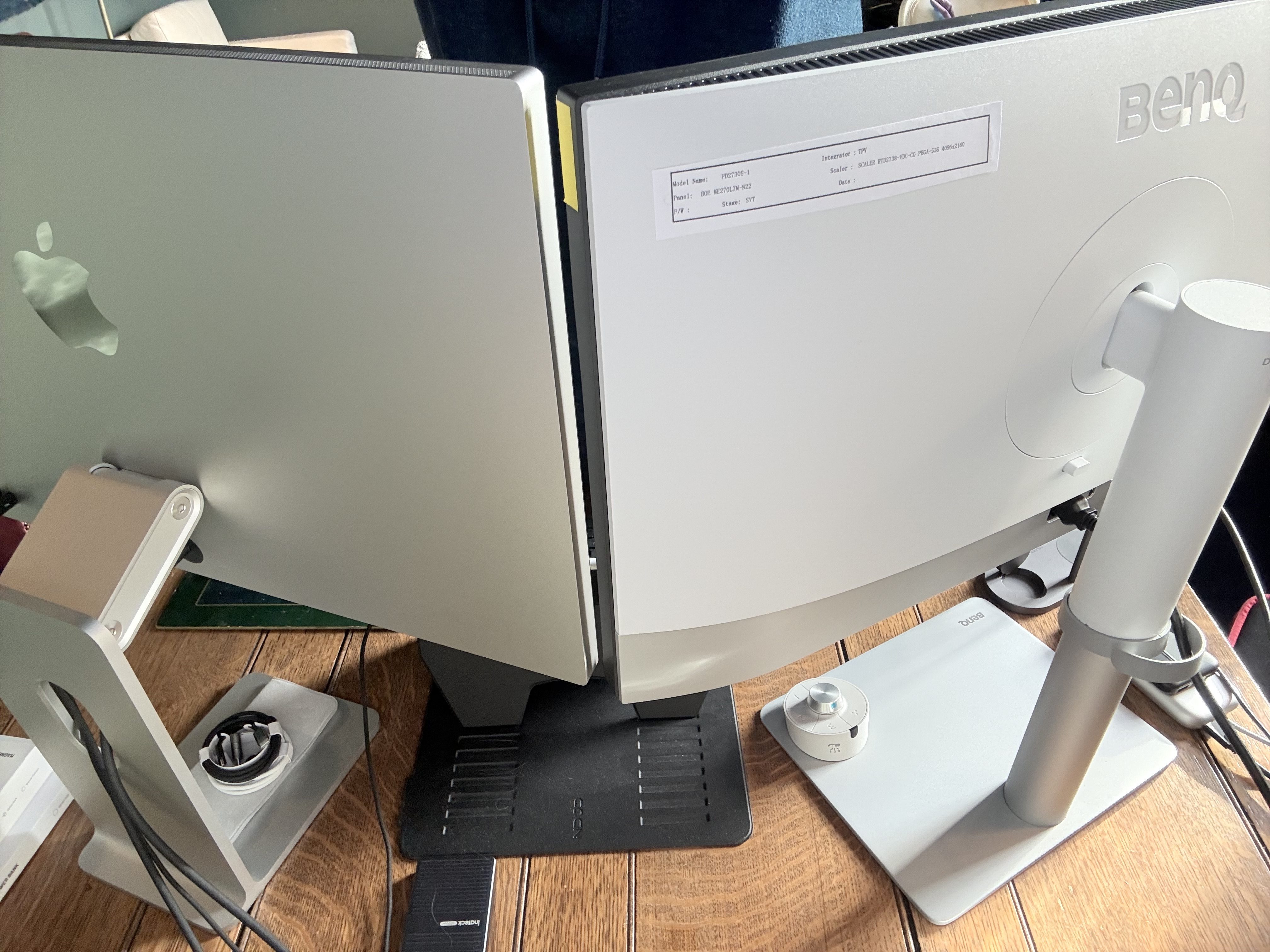
Once set up, the monitor feels remarkably solid, and the stand deserves special mention - it's a robust piece of engineering that provides great stability. I particularly like how the display panel remains steady even when adjusting its position, something that's surprisingly rare in this price range.
Speaking of adjustments, BenQ hasn't skimped here. The stand offers a comprehensive range of movement: height adjustment up to 150mm, -5° to 20° tilt, and smooth 60° swivel capabilities. This versatility comes as standard - no $400 upgrade required, Apple. For those preferring alternative mounting solutions, there's a standard VESA mount option.
Connectivity and Features

Connectivity is where the PD2730S really shines. The monitor boasts a genuinely useful selection of ports. The Thunderbolt 4 input delivers 90W of power delivery, which is enough for my 14-inch MacBook Pro. You'll also find HDMI 2.1, DisplayPort 1.4, and a downstream Thunderbolt 4 port supporting display daisy-chaining. These ports face outward rather than downward - a small detail that makes a big difference in daily use.

A thoughtful array of USB ports rounds out the package. There's both USB-C (2x) and USB-A (3x) connectivity, making this an effective hub for any desk setup. That said, most of these are located directly under the panel next to a headphone jack and they face downwards, so the dangling cables can look a bit messy if you use them all. On the other hand, BenQ includes a hook that attaches to the stand behind the monitor for funnelling cables through, which is a much more aesthetically pleasing cable management system than the one found on the ASUS ProArt 5K Display.
Another point worth noting is that the hub can provide power even when the display is off, so you can keep your MacBook and whatever else plugged in and charging regardless.

BenQ also includes its unique HotKey Puck G3 controller. This wireless dial provides quick access to display settings and input switching. It's customizable and works well, and creative professionals might appreciate it, but it's not something I've found myself using regularly.
Display Performance
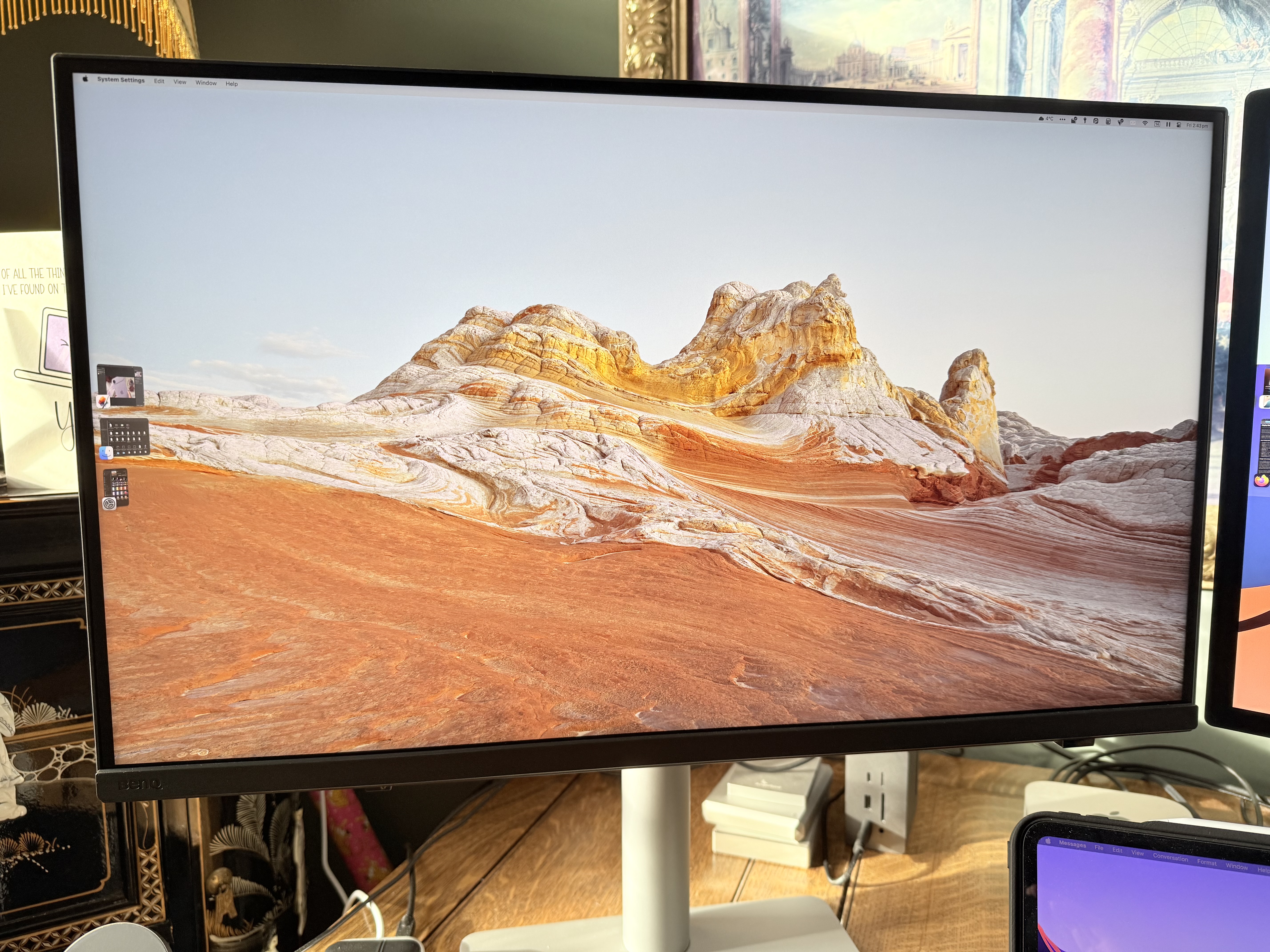
Let's get down to brass tacks: image quality. The IPS panel delivers outstanding clarity. Text on the panel appears razor-sharp, and images pop with vivid detail. With 5120x2880 resolution, you're getting the same pixel density as Apple's Studio Display. And just like the Apple Studio Display, you get 218 pixels per inch, ensuring that sweet spot for 5K Retina.
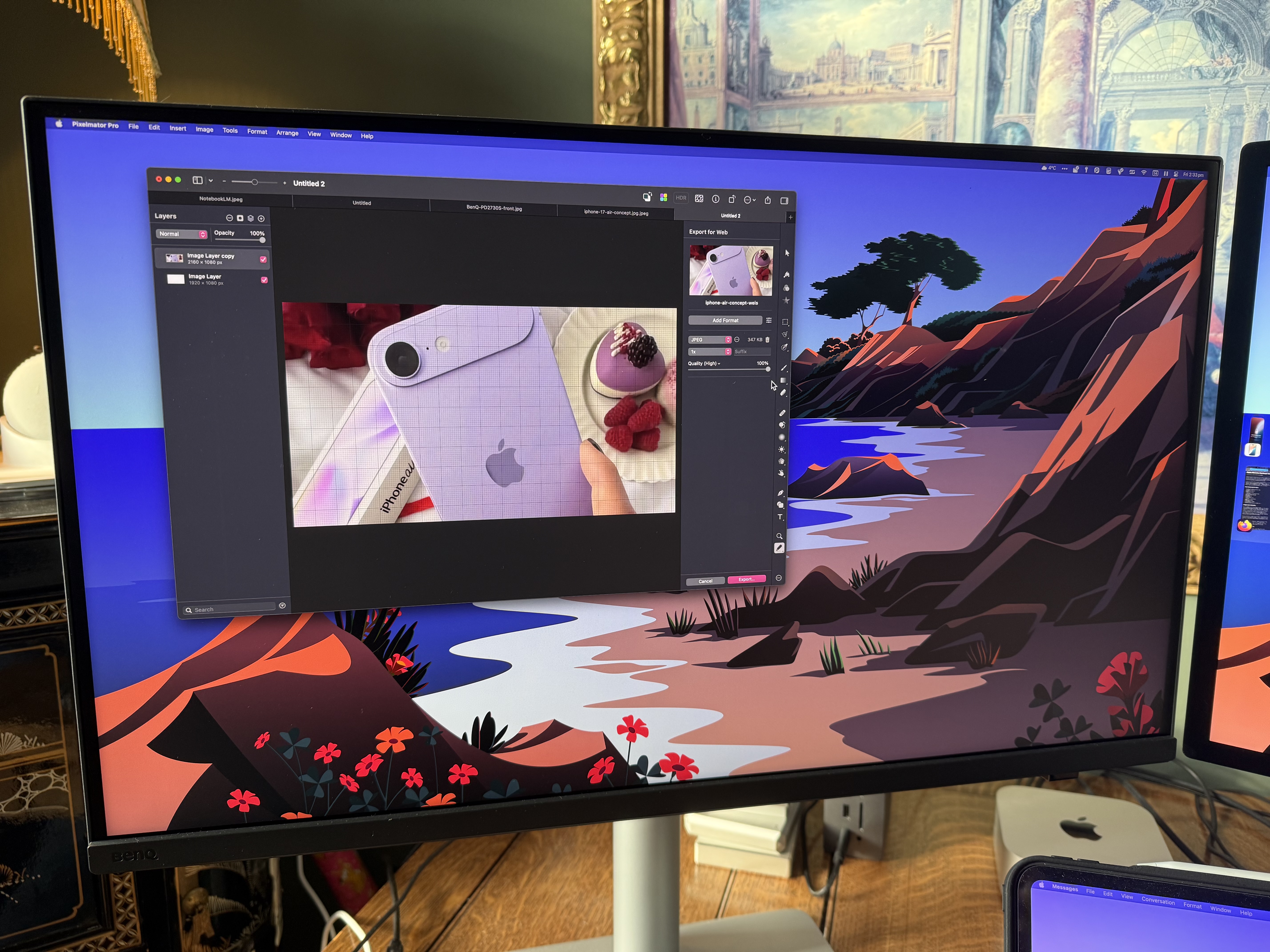
Likewise, color accuracy impresses right out of the box. The monitor covers 98% of the P3 color gamut, which is crucial for creative work. BenQ's factory calibration proved spot-on as far as I'm concerned, although you can fine-tune things further using the included software tools. Display ColorTalk lets you easily match colors between a MacBook and the monitor or between two monitors – no calibrator needed – while Palette Master Ultimate lets you achieve more precise color matching using a calibrator.
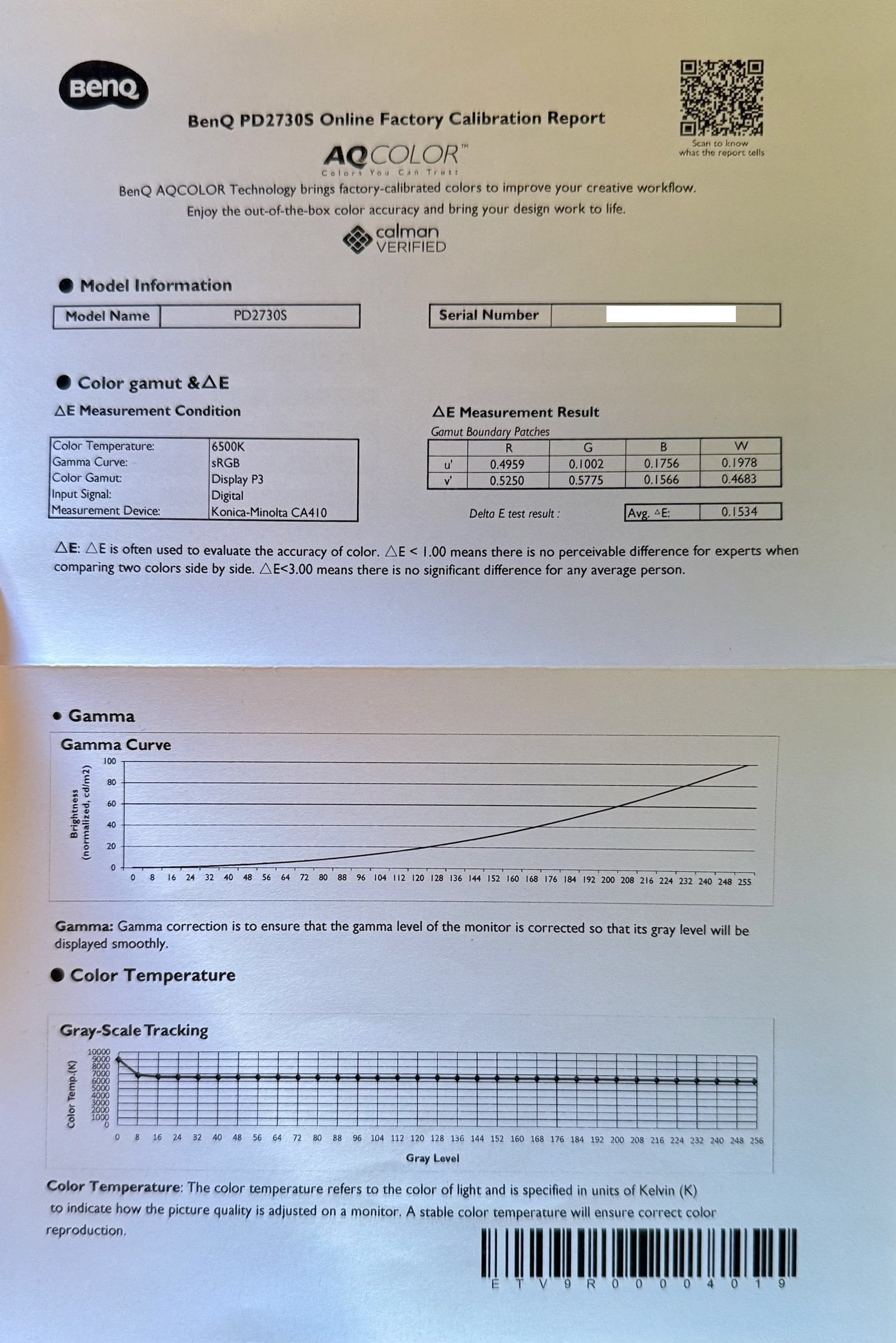
The panel employs BenQ's Nano Matte co... Click here to read rest of article
Article Link: Review: BenQ PD2730S 5K Designer Monitor – A Studio Display Alternative That Doesn't Break the Bank



